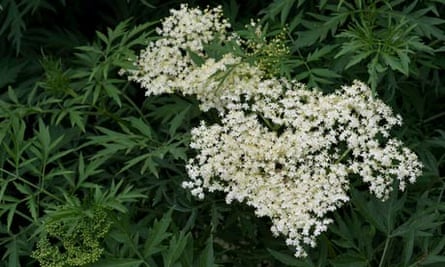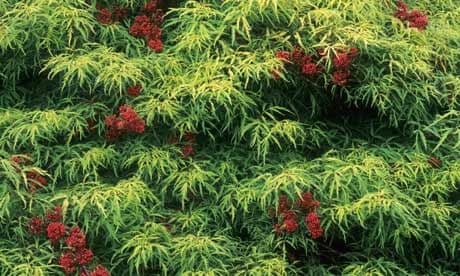It is a beautiful day: there are skylarks, high puffs of cloud and broken sunshine. It is too cool for shirtsleeves when the pools of sunshine are out of reach but warm enough to bask when a brisk wind pushes the clouds aside. The meadows are up, the grasses playing tall and not yet pushed about by wet and squall, and I am writing today with the sound of bumblebees busying themselves in the linaria.
The garden is still late and although the elderflower is blooming sweetly in London and on the motorway verges on the first hour out of town, it is a couple of weeks behind in Somerset. Growing fast and lushly, they dominate at this time of year, elbowing their neighbours aside and making sure they get the light they need for their harvest of berries. Having lived fast, they do get old before their neighbours, splitting at the base after a decade or so to leave a broken tooth in the hedge line. Bad behaviour aside, the deadwood makes the best of kindling and a year without elderflower syrup is a year without summer captured in a jar.
I would never volunteer to plant a common Sambucus nigra in a garden setting. The likelihood is that they will arrive on their own from seed carried in by songbirds that have feasted on the glut of berries. These are some of the first to ripen in the autumn, hanging shiny and black in heavy trusses, and they are gone in a minute once the weather cools.

Elder will grow anywhere, and this is why, in the selected varieties, they make a useful garden plant. They will grow as happily on chalk as they will on thin acidic sand, and give them heavy, wet clay and they will put on more than a metre a year. They are adaptable to sun or to shade, growing tighter and flowering more heavily in sun and more lushly in shade, where flowering will also be lighter. Though the foliage might burn in salt-laden winds, it will regenerate and they make good frontliners for this reason.
Their speed of growth and willingness to settle in fast is useful behaviour and I will often use them to provide height and volume when it's needed. Sambucus race upwards when they are happy, and this makes them useful as a "nurse" plant for slower-growing shrubs that need some initial shelter. I used them in my garden in London, to provide height and volume in the early years, and removed them later, seeing their contribution as easy come, easy go.
Sambucus nigra "Laciniata" is the closest you can get to the wild elder without the thuggish behaviour. The flowers are cream and held flat, like balancing plates among netted foliage. Growth is light and airy, each leaf netted like a delicate seaweed, and they make a delightful foil for ascending foxgloves and wilding roses. They are also good for growing in grass and I'll use them to feather a garden out into more natural places.

Sambucus nigra "Black Lace" is in many ways similar to look at but it is altogether more ornamental for its colouring. The foliage is as dark as damsons and glossy when it emerges. The flowers are the colour of blackberry fool and make a wonderful compliment to moody perennials such as Astrantia "Roma" and Lilium martagon. Once the plants establish, you can also use them as a frame for Clematis viticella, their tiny flowers adding a myriad of later-summer interest. Cut the plants back to a tight framework in the winter to encourage a wonderful crop of lush foliage.
"Black Beauty" is another dark-leaved variety with uncut foliage, dark-coloured stems and the same pink in the flower. It is quieter than "Black Lace" and perhaps less of a talking point. Of the yellow-leaved varieties the American elder, Sambucus racemosa "Sutherland Gold", is the best. Find it a cooler corner to keep it in good condition and team it with Digitalis purpurea "Apricot" to amplify its early salmon colouring. It will not flower as profusely, or provide you with cordial, but as it dims to a soft gold you will be happy to have the continued freshness of a summer solstice.
Get Growing
Heel cuttings of elder strike easily if taken now from semi-ripe wood. Ideal material is this year's side shoots to a main branch. Root in 50: 50 sharp grit and compost in a cool corner out of direct sunlight
